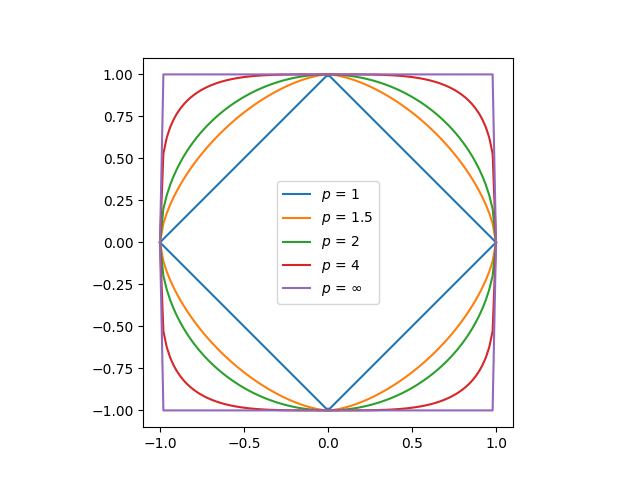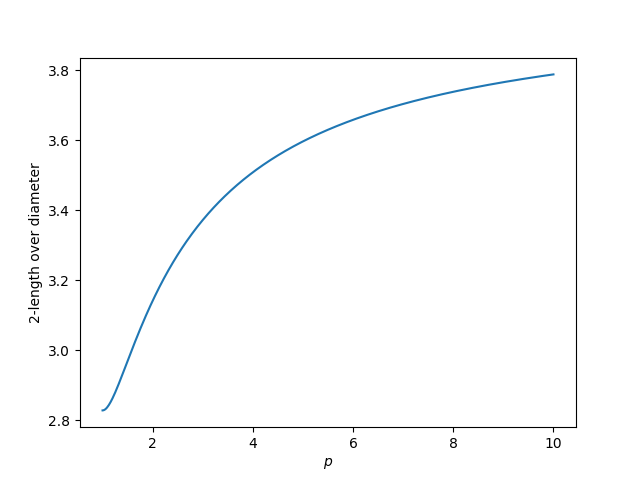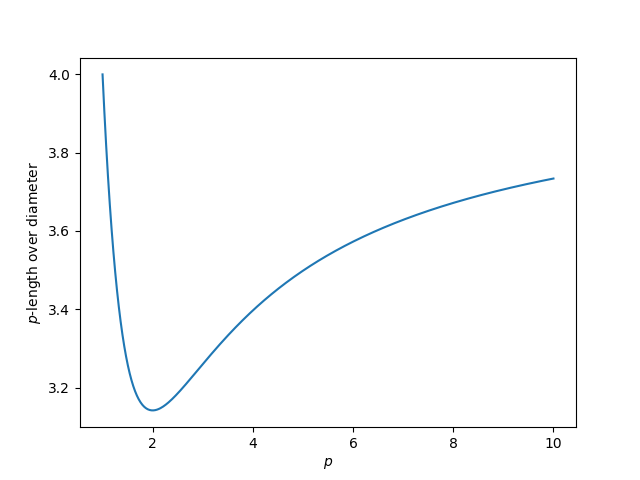Two ways of generalizing π
The constant is the ratio of a circle's circumference to its diameter. We can generalize by generalizing what a circle is. We will define a p-circle to be the solution to
for 1 p . The case ofp = is defined as the limit of the cases ofp asp .
Here's whatp-circles look like forp = 1, 1.5, 2, 4, and .

We could define p as the ratio of the perimeter of a p-circle to its diameter. When p = 2 we get , so 2 is just . And we can see that 1 = 22 and = 4.
We might ask for what value of p does p = 3. Evidently for some value between 1 and 2, which we can find numerically to be 1.5815 using the Python code from this post.
Confession: I stretched the truth a little in the plot above. The curve labeledp = 1.5 actually corresponds top = 1.5815, so the circumference of the orange curve above is exactly 6. (The difference between a 1.5-circle and a 1.5815-circle is hardly noticeable.)
The approach above is one way to generalize , and it is the approach taken in squigonometry."
Second approachThere's an inconsistency in the approach above. We've changed our definition of circle without changing our definition of arc length. We could say a p-circle is the set of points with constant distance to the center, as measured in the p-norm metric.
This is consistent with the definition above. However, when we also measure the circumference of the p-circle in the p-norm metric we get a different circumference and hence a different definition of p.
As before, 2 = and = 4. But with this new definition 1 = 4. How is this? The 1-circle is a diamond, and the length of one side of this diamond is 2 in the Euclidean (2-norm) metric, but the length is 2 in the 1-norm metric.
Comparison plotsUnder the first definition of p, computing the perimeter of a p-circle using the 2-norm, p is an increasing function of p.

Under the second definition p, computing the perimeter of a p-circle using the p-norm, p is not a monotone function of p. Instead, p starts at 4 when p = 1, decreases to a minimum at p = 2, and increases asymptotically to 4 as p . Or as the title of [1] puts it, is the minimum value for pi."

[1] C. L. Adler, James Tanton. is the Minimum Value for Pi. The College Mathematics Journal, Vol. 31, No. 2 (Mar., 2000), pp. 102-106
The post Two ways of generalizing first appeared on John D. Cook.